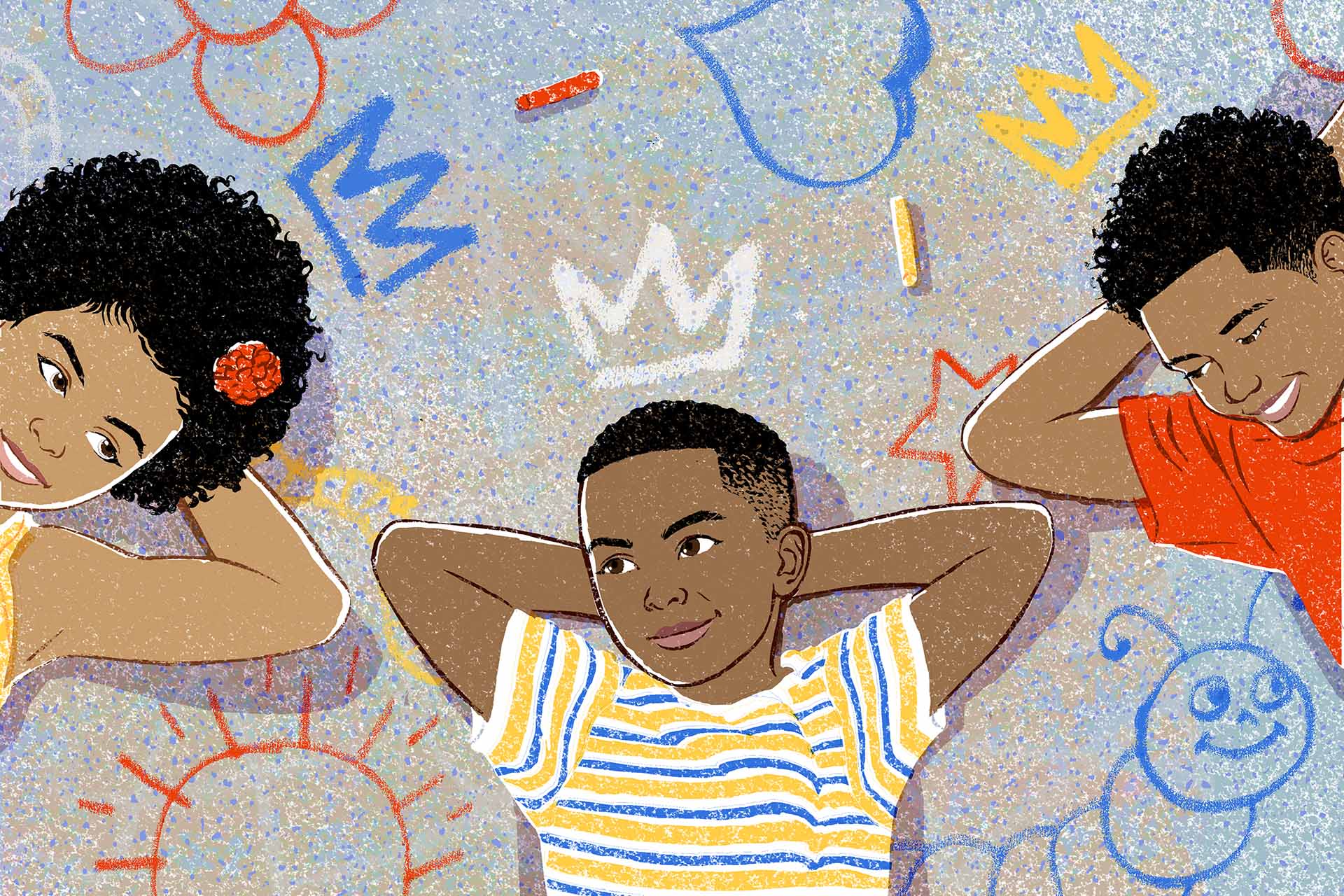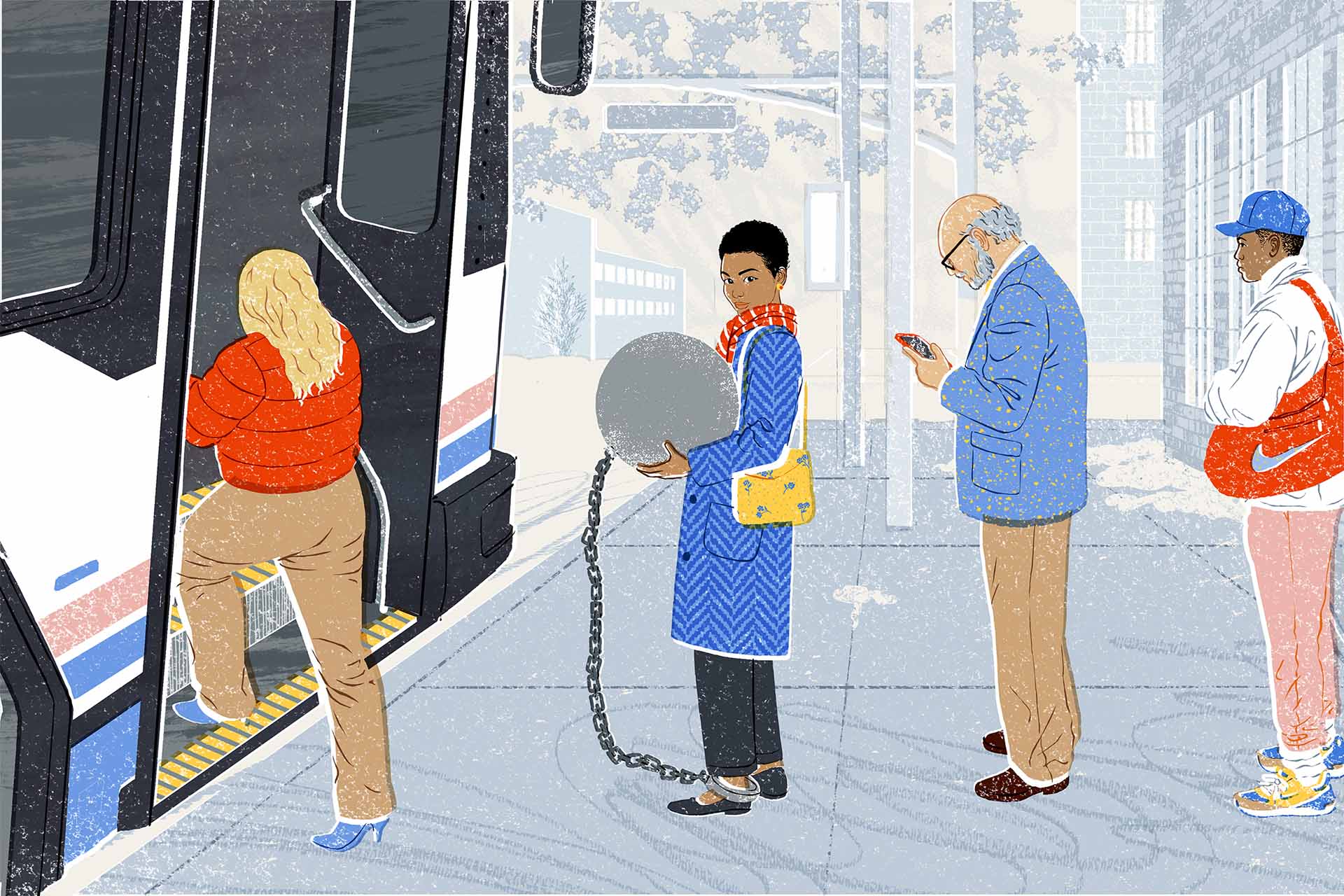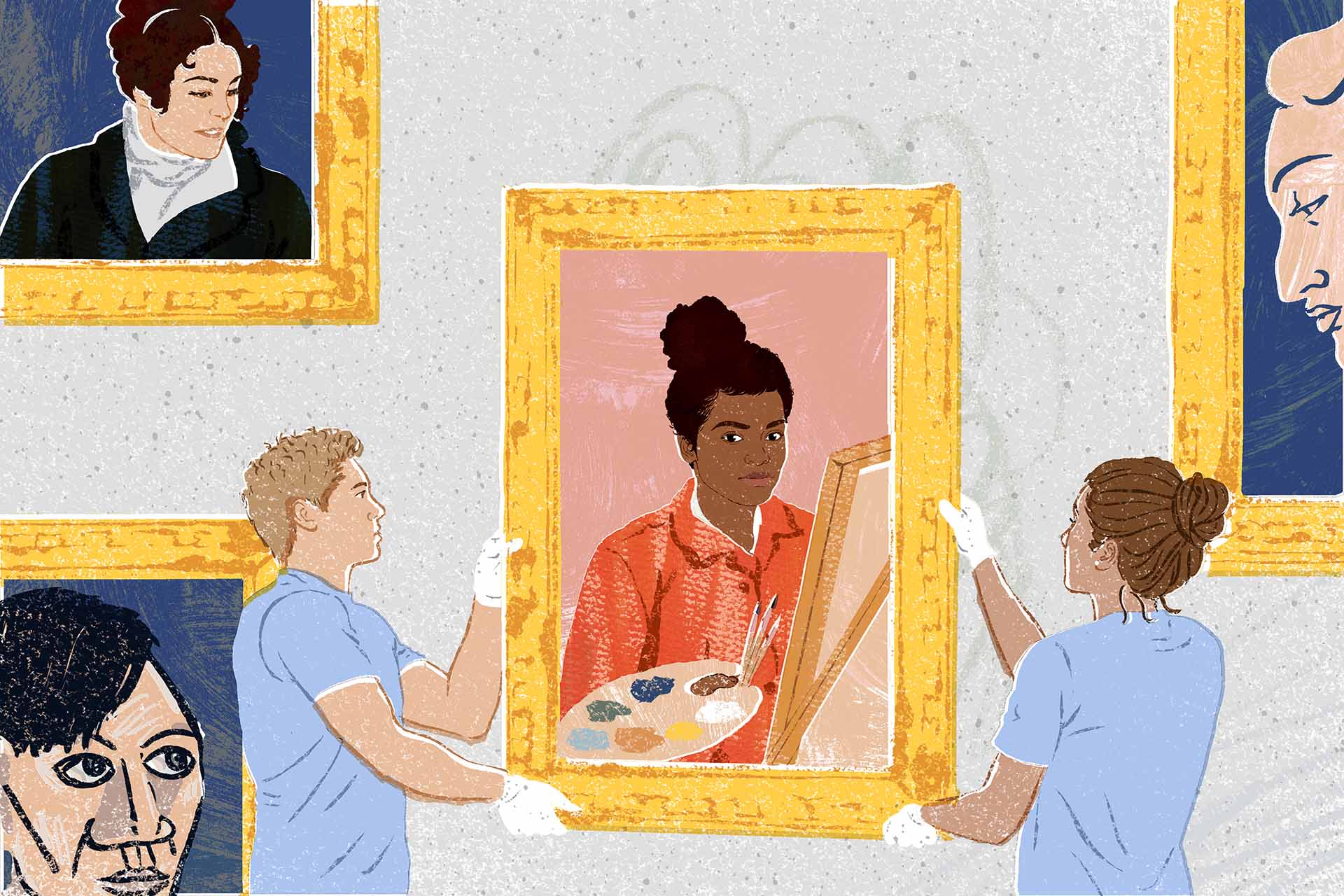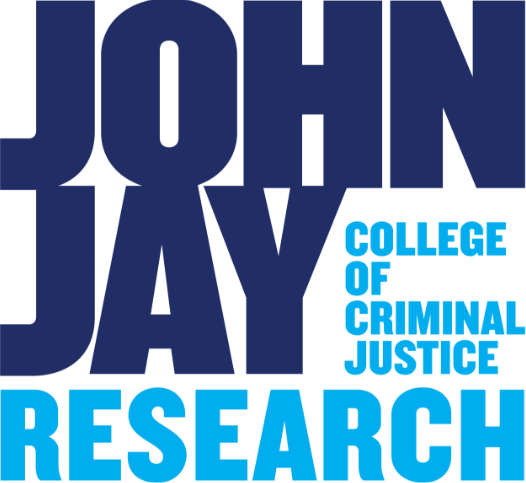Education for Liberation
John Jay scholarship contributing to new understandings
of race, racism, and
matters of justice
Researchers: Lisa Farrington, Veronica Johnson, Robert Robinson, Shreya Subramani
Author: Michael Friedrich
Recent years have brought intense public scrutiny to issues of racial inequity and injustice in our society. Nationwide protests over police killings of unarmed Black people have roiled the nation. Meanwhile, long-standing institutional and social inequality means that communities of color are disproportionately at risk from the threats of poverty, climate change-related disasters, and the COVID-19 pandemic. The necessity of John Jay College’s commitment to cutting-edge research and practice in pursuit of racial justice has never been clearer.
The role of scholarship in combatting inequity is manifold. Not only do researchers make a difference by exploring issues of systemic racism and proposing innovative solutions, but in an institution like John Jay, which serves New York City’s vibrant community, providing research opportunities for students is a source of inspiration for a new generation of problem solvers.
“John Jay is home to a diversity of scholars, practitioners, and mentors who take seriously their role in applying their work to some of the most complex yet pressing racial justice issues of today,” said Dara Byrne, former Associate Provost for Undergraduate Retention and Dean of Undergraduate Studies. “They are committed to guiding students through the academic research process, helping to cultivate a population of undergraduate researchers with the skills to effect real change.”
John Jay’s Office for the Advancement of Research joined the President’s Office, the Office of Institutional Effectiveness, and other departments in responding to a call from the community to tackle issues of racial justice. In 2020, OAR worked with the Office of Undergraduate Studies to inaugurate the Racial Justice Research and Practice Dialogues, a platform for scholarly discourse that brings together academics and practitioners. “The Racial Justice Dialogues are part of a collective effort to respond to the question of how we work with our community on racial justice issues from the perspective of scholars of color,” said Dr. Anthony Carpi, Dean of Research at John Jay. “Our faculty are bringing their unique perspectives to foundational issues, and inspiring our students to take up research that has an impact.”
Efforts to support scholarship that promotes equity have been part of the foundation of John Jay for decades. In turbulent times, an explicit mandate to advance the community’s understanding of racial justice is a vital component of that mission. The College’s leadership in scholarship related to race and racism is reflected in the research and practice of its faculty, in fields from pedagogy to psychology, political science to the arts.
“Education For Liberation”
Among Black communities, civil disobedience in defiance of harmful social barriers has a rich history. This includes long-held traditions of education. During enslavement, “free Black folks would sneak onto the plantation to teach enslaved Black folks how to read and write,” explained Dr. Robert Robinson, an assistant professor and academic counselor in the Percy Ellis Sutton Search for Education, Elevation and Knowledge (SEEK) Program at John Jay. That practice could carry profound consequences, and Robinson considers it an early example of “education for liberation.”
Robinson’s research on Black education draws on that history and focuses on the Black Panther Party’s Oakland Community School. In the 1970s, building on ideas from the Civil Rights Movement, the school taught a curriculum that emphasized mindfulness and restorative practice, well before they were widely recognized in public schools. Feeding students three meals a day and providing access to dormitories and health care, it also made a range of services available in a Black neighborhood from which the city withheld resources.
A proposed book by Robinson tracks the history of the Oakland Community School and its legacy in the current landscape of U.S. education. The Black Panthers are well known for providing free breakfast to students, a practice that is now standard in American primary schools. Less recognized is the profound impact that Black Panther schools had on the fields of curriculum studies and pedagogy around Black and ethnic studies, which took shape in the Bay Area around the same time. “All that has roots in Black Panther activism in the ‘60s and early ‘70s,” said Robinson.
Robinson is also making his own impact on the landscape of U.S. education. Before coming to John Jay, he spent 11 years as a K-12 teacher for underserved students. Today, he is an advisor in the college’s SEEK Program, which supports disadvantaged students completing college across the City University of New York (CUNY).
The SEEK Program provides students with access to strong academic counseling and a support network of other students. It also offers free tutoring and connections to resources at John Jay and other CUNY campuses. Specialized programs support men of color and women, nonbinary, and femme students. Robinson said that a class called Education and Justice helps students examine how their schooling intersects with broader systems of power.
“We’re leveraging the strengths that students bring in,” Robinson said. “We’re also creating opportunities for students who, socially and economically, wouldn’t otherwise have the chance to attend college.”

Strengths-Based Approaches
Drawing on the strengths of the Black community has also become a powerful way to address the psychological and emotional harms that experiences of racism can cause. Dr. Veronica Johnson, an assistant professor of psychology, has devoted her research and practice to better understanding how the field diagnoses and treats race-based traumatic stress.
“We often understand ourselves as living in a post-racial America,” Johnson said. “But the reality is that racism is ingrained in all our institutions. We have a racism issue in this country that is psychologically harming people on a daily basis.”
Johnson conducts research with clinicians to improve their treatment of Black clients. One factor she has tested empirically is the presence of Black cultural values in clients. These values include “communalism,” an Afro-cultural tendency to depend on community members for assistance; “racial socialization,” or the messages that children get from their family about dealing with racism and pride in one’s racial identity; and “racial identity development,” which allows a person to develop relationships with people within and outside of their racial group while recognizing the existence of racism in society. Johnson devised a method for measuring these values in clients and found that, when present, they predict greater social support, psychological function, and overall self-esteem. She is currently working on a book that encourages clinicians working with Black clients to assess clients for these qualities and strengthen them over the course of therapy.
Johnson also promotes culturally competent psychological intervention. Although the field is composed predominantly of white clinicians, a forthcoming study by Johnson shows that when white therapists “credential” themselves by asking about aspects of a Black clients’ race, gender, and sexual orientation, it creates a safe space and those clients feel more open to working with that therapist.
Johnson is putting her research into practice by working with counselors and organizations to provide education on these issues, as well as offering long-term guidance on diversity, equity and inclusion.
“The idea is that Black people know what works for them,” Johnson said, “so we need to arm clinicians to understand these cultural values and work to bolster them.”

The Problems of Prison Reentry
The racialized policies of the prison system present barriers to the well-being of Black, working class communities. Dr. Shreya Subramani, a sociocultural anthropologist and professor of Law & Society in the political science department, conducts ethnographic research on the criminal justice reform policies of prison reentry programs to question whether they truly lead to improved racial justice—or simply less visible forms of racism.
“We know that mass incarceration is a crisis, and reform is touted as a path to more equitable forms of policing and incarceration,” Subramani said. “My research troubles this assumption that criminal justice reform is simply a path to racial equity.”
As part of her current book project, Carcerality in Transition, Subramani conducted field work in Louisiana, the most incarcerated state in the U.S., where Black residents are four times more likely than whites to be imprisoned. She observed the Orleans Parish reentry court program, which provided two vocational training certificates and a GED to people incarcerated for a minimum of two years at the Louisiana State Penitentiary. After participants were released, the court brokered jobs for them, as well as services like transitional housing, legal representation, and connections to a small business incubator for formerly incarcerated entrepreneurs.
Subramani’s study acknowledges the practical benefits that reentry court programs provide for participants trying to succeed post-incarceration, but raises several problems about the Orleans Parish court program. For one thing, its employment arrangement is often exploitative, with the court playing recruiter, offering tax incentives, and managing risk for private companies that typically provide participants underpaid temporary positions without contractual protections or benefits—all under the tacit and sometimes explicit threat of fines, fees, or reincarceration if they fail. At a deeper level, said Subramani, reentry court programs ultimately require that participants affirm incarceration as a valorized experience of transformation, one that has led to their individual rehabilitation and legitimization, and thus disavow the systemic violence that mass incarceration has done to them, their families and wider communities.
“Forms of carceral power are shifting to produce new kinds of racisms,” Subramani said. “Maybe it’s not a racism that we immediately recognize, but one that emerges through things like social entrepreneurship, problem-solving courts, and the efforts of many people who want to make change in good faith but are constrained because helping formerly incarcerated people seems dependent on participation within carceral institutions.”
As an alternative, Subramani points to a growing vision of prison abolition that draws on the work of CUNY scholar Ruth Wilson Gilmore. “By critiquing criminal justice reform, I’m trying to trace the relations that prevent us from seeing alternative ways of depending on each other, of organizing together, and of caring for each other,” she said. “The goal of my research is to motivate a critical praxis which recognizes that just as carcerality is constantly shifting and changing, so is the terrain of abolitionist politics.”

A Place in the Canon
In the face of continued oppression, the arts may help reckon with Black experiences in this country. Dr. Lisa Farrington, Distinguished Professor of Art, has spent her career centering the work of Black artists—particularly women. “My aim, ultimately, is to bring attention to an underrepresented group in the art historical canon,” Farrington said.
In 2016, Farrington published African-American Art: A Visual and Cultural History. A definitive work in the field, it incorporates artists and forms that have often been omitted from past histories, including many women, as well as Black architects, photographers, and craft and folk artists. Its most profound contribution may be to recategorize Black artists around American art historical movements. In the past, art history books have almost always followed Black socio-political history—for example, slavery, the Civil War, the Black Power Movement. But Robert S. Duncanson knew that he was a painter of romantic and neoclassical landscapes, and Alma Thomas self-identified as an abstract expressionist, Farrington explained, by way of example.
Farrington suggests that this is a mistake of categorization, although some observers might see it as a deliberate effort to marginalize Black artists. “Museums are just now changing where they hang Black art,” she said, “not in the Black art room, section, or exhibitions, but with other political art, abstract expressionist art, feminist art, or Afrofuturist art.” She is frequently asked to curate exhibitions, providing a chance to change the way Black art is presented in museum institutions.
Farrington is developing several book projects. One of these will use historical artworks to help explain the way racism developed and shifted over time. In particular, it will show that racism against Africans as we understand it today—as “propaganda against Blacks”—did not start when slavery started but later, in the 18th century, as a way to perpetuate slavery in the age of abolition. “Art is the primary-source proof as to exactly when attitudes toward Blacks changed,” she said.
In May 2022, Farrington presented an honorary degree on behalf of John Jay to Faith Ringgold, a celebrated pop artist whose work expresses themes of Black feminism and incorporates elements of folk art. Ringgold’s work is a special area of study for Farrington; she wrote her CUNY Graduate Center dissertation and two subsequent books on Ringgold.
“If you study the work of African-American artists,” Farrington said, “you are going to study how those artists had to deal with issues of race in their lifetime.”
